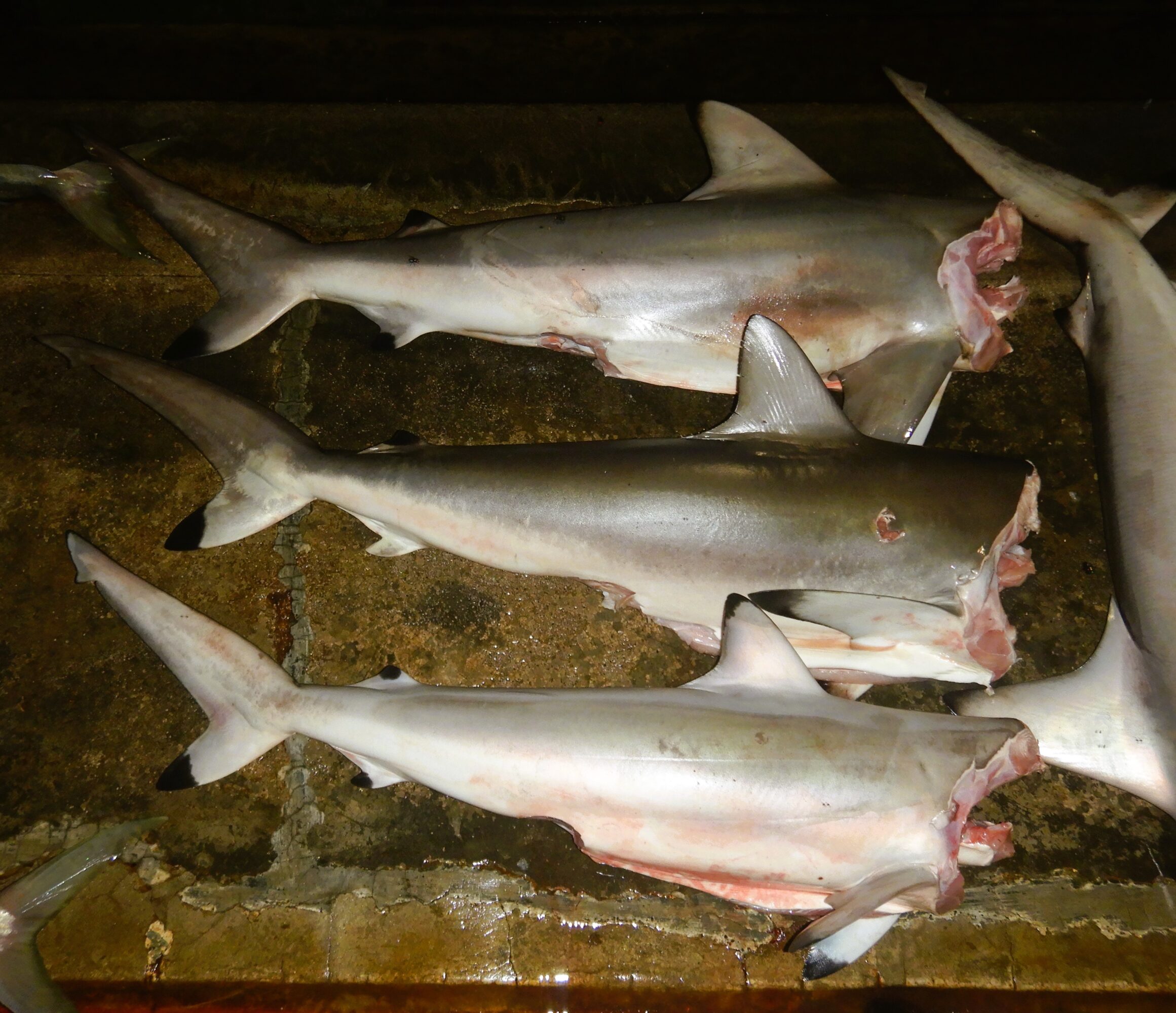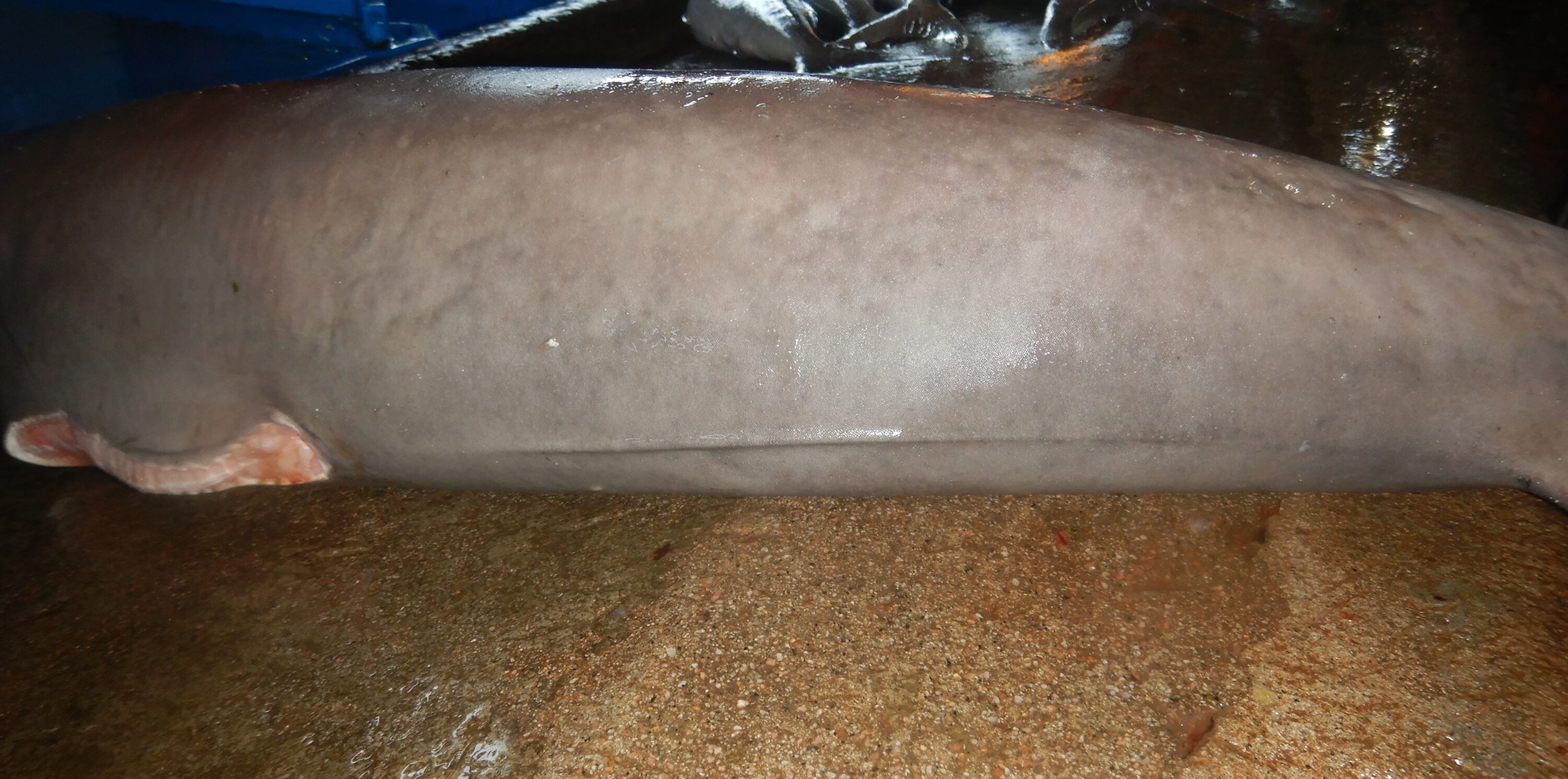Monitoring Seychelles’ Artisanal Shark Catch
Monitoring the artisanal elasmobranch catch is vital to provide a baseline for informed management and to assess the efficacy and impact of management measures. Effective elasmobranch catch monitoring is complicated because species differentiation is often difficult, for example various carcharhinid species can be problematic to distinguish even when intact.

Shark species can be difficult to distinguish. Top-down: blacktip (Carcharhinus limbatus), spottail (C. sorrah) and spinner (C. brevipinna). Photo © John Nevill

Caudal fins, if present, play a key role in species identification. Left to right: silvertip (Carcharhinus albimarginatus), grey reef (C. amblyrhynchos), spottail (C. sorrah) and blacktip shark (C. limbatus). Photo © John Nevill
Most shark carcasses that come to market are already dressed i.e. gutted, with head and some, or all, of the fins removed. This makes identification much more difficult as most of the key characteristics have been removed. In this scenario nothing can replace hands on experience. A range of factors come into play: skin colour, texture and thickness are key. Colour and texture, however, can be altered depending on how, and for how long, the carcass has been stored. For example, extended retention in ice water can lift the denticles up making the skin feel much rougher than normal. Likewise packing in ice for days can serve to lighten the skin colour. The colour of the meat can be a helpful identifier but this too can be changed by storage in ice water. The density of the flesh is also a potential indicator but that can change with the season for females. A mature female in good breeding condition typically yields excellent meat with a high fat content while a female that has recently pupped will have meat much more loose and spare. The size of scars, length and width, where fins have been removed and the distance between fins relative to body length are also useful indicators.
This project is, inter alia, training fishery technicians in shark species and shark carcass identification. They are told to start with the texture of the skin and then its colour, including if a flank stripe is apparent, and its thickness. Does the trunk exhibit an Interdorsal ridge and if so how long, prominent and wide is it? If doubt remains the colour and density of the meat are also assessed. By following this routine every time, repeatedly, day after day technicians build up an almost sub-conscious reference library of species’ texture and colour etc… Once a technician has handled 100 grey reef shark carcasses and confirmed their ID they will start to know at first glance whether the trunk is of this species or not and will be able to confirm that identification by rapid touch and inspection. With experience more species become readily distinguishable, but decisions should always be made on more than one criterion as there is variation between and within species of these characteristics.

The bull shark (Carcharhinus leucas) have very rough skin which is markedly dorsally thickened. Photo © John Nevill

The sandbar shark (Carcharhinus plumbeus) can be identified by its skin texture, colour and distinctive interdorsal ridge. Photo © John Nevill
This project will also produce a species identification guide to support effective elasmobranch catch monitoring. In the meantime, species can be identified utilising the species description pages on the Seychelles Seatizens website (www.seatizens.sc) at the elasmobranch index page.
